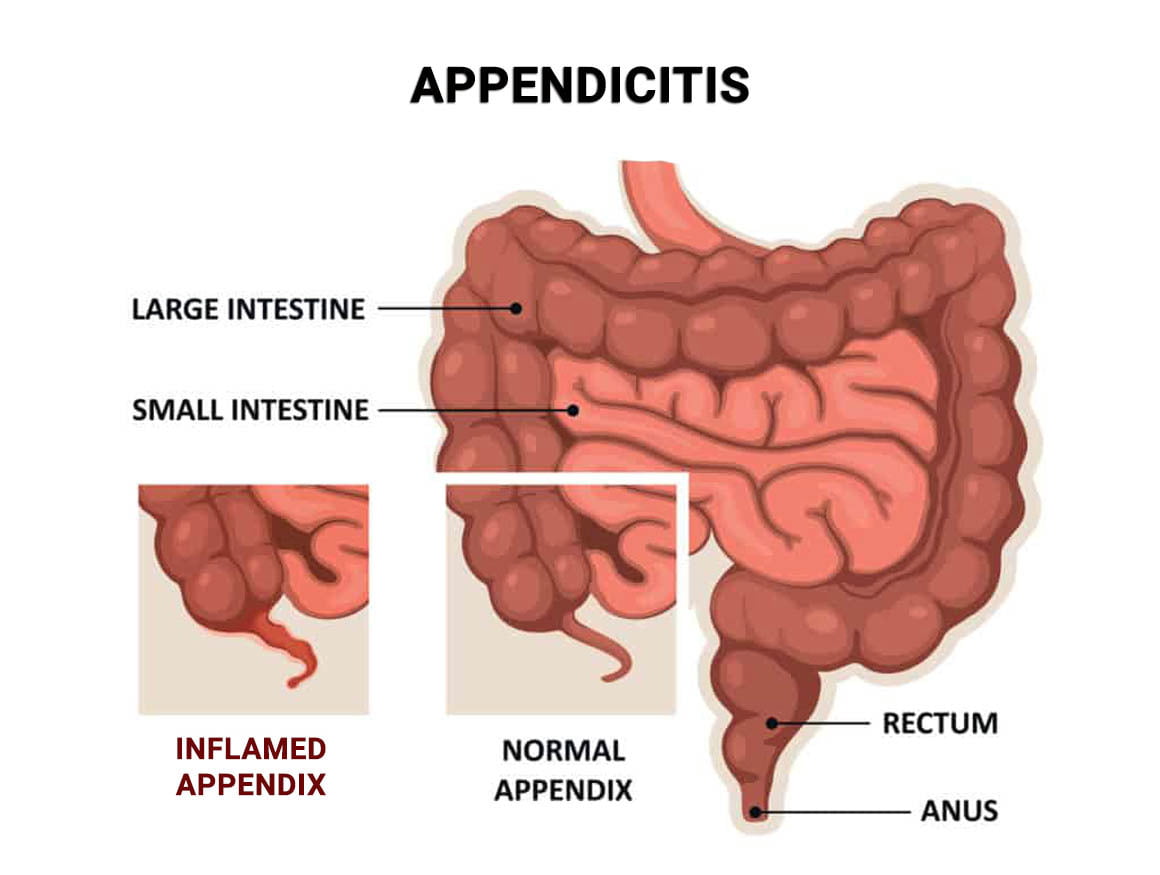Most of us experience abdominal pain at least a few times in our lifetime. If your abdominal pain is unusual, persists in the lower right region, or begins to affect your daily activities, it may be something serious or a sign of some underlying medical condition. The lower right abdomen contains most of the body’s vital organs, and any problem with these organs or their functions should be carefully checked. Manhattan Gastroenterology specialize in diagnosing and treating all types of abdominal pain. The top-rated doctors use the most cutting-edge techniques and the latest research to understand what is causing your symptoms and provide the best treatment to keep you in good health.
Types of Abdominal Pain

There may be many possible causes of pain in the lower right side of the abdomen. But there are also different types of pain that you may experience. Sharp, stabbing pain in the upper abdomen can indicate gallstones, while a dull, painful sense of fullness can be a sign of bloating, or a burning sensation near the stomach may be resulting from heartburn.
Sometimes it is hard to pinpoint the origin of pain due to the presence of several organs in the cavity. In such cases, focusing on other symptoms that are occurring together can help with diagnosis. For most people, the type of pain will be a sign of how concerned they should be and when to seek medical attention. Mostly it only catches our attention when the pain is localized and sharp and makes us consider other possibilities.
Recognizing the differences between pain and their exact location is a significant part of identifying the ultimate cause.
Organs in the Abdomen
The abdominal area is a large body cavity that is located between the thoracic cavity and the pelvic cavity, near the hip bone. It is home to organs and tissues that are part of the various body systems. They include:
- Digestive system
- Endocrine system
- Enteric nervous system
The following organs are closely arranged in the abdomen:
- Stomach
- Spleen
- Large intestine
- Small intestine
- Liver
- Gallbladder
- Pancreas
- Kidneys
- Adrenal glands
Due to so much activity in the abdominal region, determining the source and causes of pain in any of these organs becomes a challenge.
What Are the Possible Causes of Lower Right Abdomen Pain?
Determining the type of pain and its exact position is the first step in trying to find out the causes of your discomfort. Most abdominal pains can be easily explained, such as fullness or bloating after a heavy meal, or cramps resulting from menstruation, but when the pain is notably in a specific place, it may be a cause for concern. Discomfort that continues to bother you in the lower right quadrant can be a little alarming as it may be a result of some health condition.
Here are some possible causes of pain in the lower right abdominal region you should watch out for.
Appendicitis

It is perhaps one of the most commonly known causes of pain in the lower right side of the abdomen. Even people who have not suffered appendicitis in their lives would be aware that it could be one of the reasons for pain in this part of the stomach. The pain starts in the middle of the stomach, lasts for over an hour or so, and with time, it slowly moves to the right lower quadrant.
The appendix is a small structure attached to the lower right section of the large intestine. When it becomes inflamed, it can result in severe pain in the surrounding area along with nausea, vomiting, and fever. The pain becomes sharper if you cough or move suddenly, and it eases if you pull your knees up to the chest. In case of the appendix bursts, you could experience severe pain that spreads all over the abdomen. An appendectomy is the only way to get rid of the problem and relieve the pain and irritating symptoms.
Intestinal Gas
The food digestion process consists of a series of complex chemical reactions that takes place in the small and large intestines and produces gas. In most cases, the body can naturally eliminate this gas through flatulence or belching without causing any problem. But sometimes, gas buildup in the digestive tract can exert pressure on the inside walls of the intestines, which results in abdominal pain in a specific area.
Gas in the intestines can also be a result of bacterial presence in the digestive tract or if you have swallowed too much air. You may feel the pain as gas moves through the intestine. Other symptoms of intestinal gas include a feeling of bloating or unusual fullness in the abdomen, too much pressure, and burping.
Indigestion
Also called dyspepsia, indigestion is abdominal pain and feelings of fullness and nausea that result when your digestive system is unable to work the right way. It is not an official disease but a general term for discomfort that is felt after eating. It results from eating too much or too quickly, consuming too many spicy or fatty foods, and devouring too much caffeine, alcohol, chocolates, and carbonated beverages. In some cases, celiac disease, anxiety and using certain medications such as antibiotics and pain relievers can lead to indigestion.
Most commonly experienced symptoms of indigestion include a burning sensation, bloating, nausea and vomiting, and other similar problems like heartburn. The pain can spread to the nearby areas and feel pretty acute.
Hernia
Hernia is the general term that describes a condition in which a tissue pushes or bulges out from the cavity in which it is naturally present. There are several types of hernia and most of them take place in the abdominal cavity, causing pain and discomfort in the affected areas.
A femoral hernia happens when a piece of bowel or other tissue from inside the tummy pushes through a weakness in the muscles of the abdominal wall near the right groin. Umbilical hernia involves a segment of the small intestine that has protruded through the muscles in the abdominal wall near the navel. If whatever has pushed through gets stuck and cannot go back, it is trapped or inguinal or femoral hernia. A hernia can cause pain, and it can worsen by coughing, exercising, bending, or lifting something. It is often associated with a visible pump or swelling on the skin.
Kidney Infection
Your lower right abdominal pain may be coming from a kidney infection. Even though kidneys are located in the upper half of the abdomen, some renal conditions may still cause pain in the lower region of the stomach. A kidney infection, specifically of the right kidney, is caused by bacteria that comes from the bladder, urethra, or uterus. It could affect one or both the kidneys.
Other symptoms of a kidney infection include pain that affects the back, sides, or groin, fever and chills, nausea and vomiting, smelly or cloudy urine, frequent urination, or the need to urinate even if you just went. You may also feel pain or burning when urinating or find pus or blood in your urine. A neglected kidney infection can cause permanent damage. If you think your abdominal pain is the outcome of a renal infection, call your doctor immediately.
Kidney Stones
Sometimes accumulation of salts and minerals in the kidneys can lead to the formation of stones. These stones tend to be jagged concretions that can cause sharp pain when they try to pass through the ureter, the tube that connects your kidneys and bladder, or when you pass urine.
The intensity and the location of the pain may change as the stones pass through the urinary tract. It can cause pain wherever it goes, including the right side of the abdomen. You may feel severe pain in the back and side, below the ribs, and throughout the lower abdomen and groin.
If your abdominal pain is caused by kidney stones, you will also experience several other symptoms. They include:
- Painful urination
- Pink, red, or brown urine
- Nausea and vomiting
- Frequent urination
- Fever and chills in case of infection
Irritable Bowel Syndrome (IBS)
It is a common, chronic condition that generally affects the small and large intestines. It is more a collection of symptoms than a disease that is characterized by chronic diarrhea, constipation, or a combination of both. In this condition, the pain is not limited to an area, but there are times when it can be noticed more acutely in a particular part.
IBS can cause cramping, bloating, gas, diarrhea, constipation, a change in bowel movement, abdominal pain, as well as mucus in the stool. Health experts have not been able to pinpoint what causes irritable bowel syndrome as only a few factors have been identified. Stronger than usual intestinal contractions or abnormalities in the digestive nervous system are believed to cause IBS and the following symptoms.
Inflammatory Bowel Disease (IBD)
IBD is a group of conditions that cause inflammation of the gastrointestinal tract. It should not be confused with irritable bowel syndrome as it is something different with varied symptoms. Crohn’s disease and ulcerative colitis are the most common examples of IBD. The inflammation can occur anywhere along the digestive tract and result in abdominal pain.
Symptoms can vary depending on the type of IBD. You may experience severe diarrhea, fatigue, weight loss, fever, loss of appetite, and abdominal cramping. IBD can turn life-threatening if left untreated. It is essential to see your doctor if you continue to experience the symptoms.
Conditions Specific to Women
Some causes of lower right abdominal pain affect women only. These conditions are generally more severe and need medical attention. They include:
- Menstrual cramps
- Ovarian cyst
- Pelvic inflammatory diseases
- Endometriosis, a disease that involves tissue abnormally growing outside the uterus
- Fallopian tube
- Ovary tension
Even though you may experience pain in the lower right region, the effects can also be sensed on the left side.
When to See a Doctor for Your Abdominal Pain?
Mild cases of abdominal pain can be treated at home with a change in diet and lifestyle or pain relievers to alleviate the discomfort. It is necessary to avoid medications like aspirin and ibuprofen as they can irritate your stomach and worsen the pain. If your lower right abdominal pain lasts for more than a few days or causes unusual symptoms, it is time to make a doctor’s appointment.
A variety of health conditions may be responsible for your lower right abdomen pain that can only be determined by a healthcare provider. The sensation of pain only is not enough to help your doctor make an accurate diagnosis. The type of pain, where it is rising from, and its frequency can provide your physician with the necessary information required to determine what you are going through and develop the best treatment plan. The doctor will review your symptoms and medical history and do a physical exam, which involves applying a little pressure on the abdomen to check for swelling and tenderness.
Additional diagnostics tests include ultrasound, CT scan, MRI, endoscope, and blood works to check for infections and other signs of trouble.
If you have been suffering from abdominal pain and it feels more than just an upset stomach, heartburn, or indigestion, schedule an appointment with the award-winning Gastroenterology experts. The dedicated teams of gastroenterologists work hard to provide excellent medical care and address your digestive health concerns most efficiently. They are experts at preventing, diagnosing, and treating all types of diseases and disorders of the gastrointestinal (GI) tract, liver, gallbladder, and pancreas and come up with the best solutions to help you live a better quality of life.

